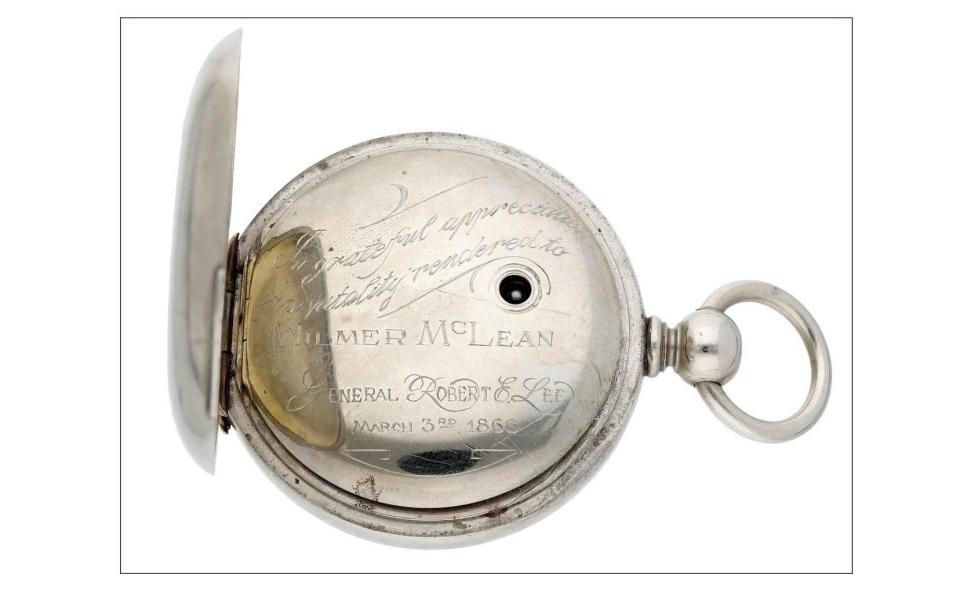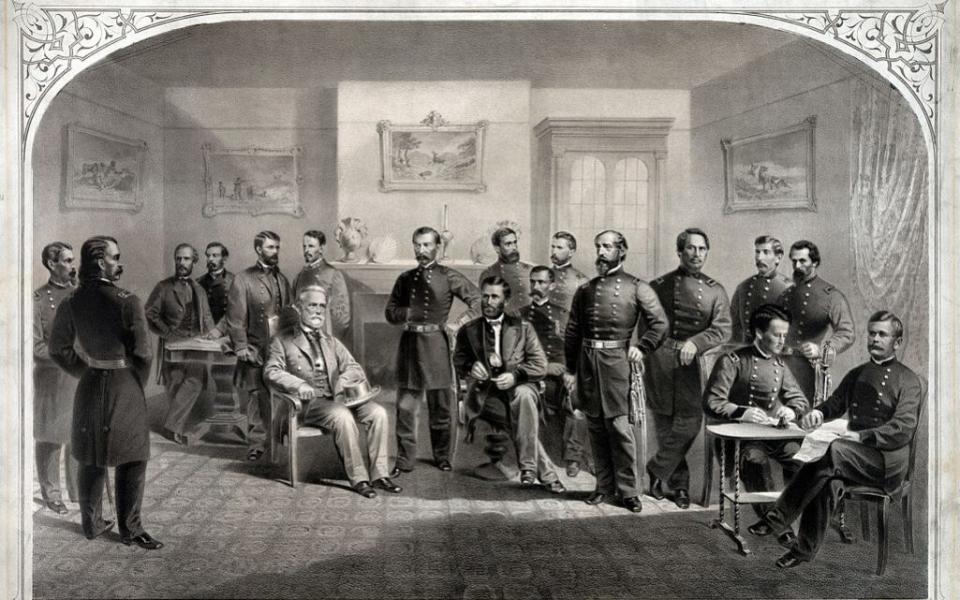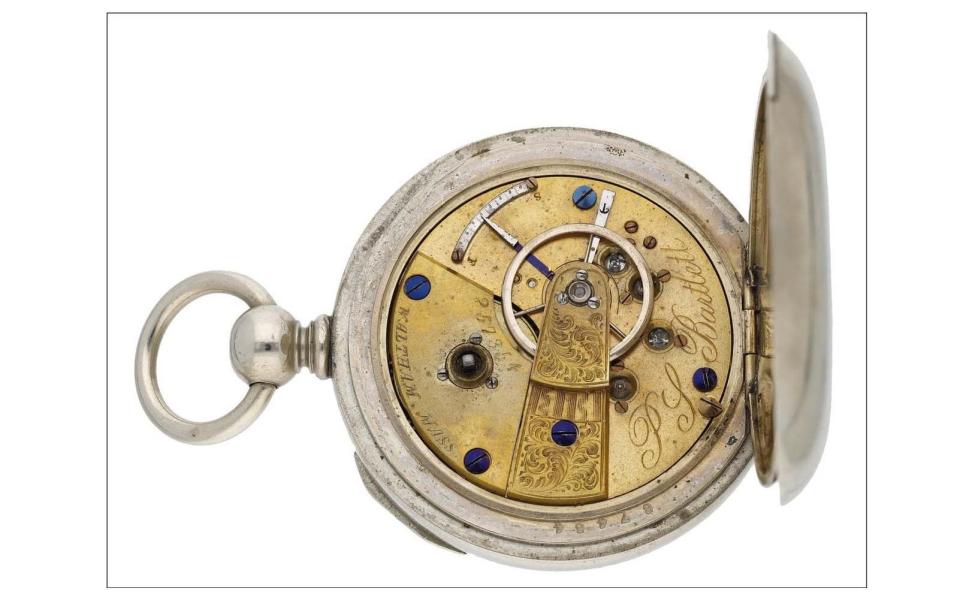The watch that symbolises the end of the American Civil War goes to auction in London

When a British watch collector discovered a 19th-century presentation pocket watch in a US antique store, he had little idea of the artefact’s significance. In fact, the period timepiece, made by the American Watch Company, is a solid reminder of the bloody struggles that led to the formation of the United States as we know it today.
Due to be sold by London-based Dix Noonan Webb, a specialist auctioneer and valuer of banknotes, coins, tokens, medals and militaria, on 9 June with a pre-sale estimate of £1,000-2,000, the watch has a standard white enamel dial with black Roman numerals and a small seconds sub-dial at six o’clock. The key-wound movement is engraved with ‘P.S. Bartlett, Waltham, Mass’ and the serial number ‘357354’.
The case is made from silveroid, which is more robust than silver and more affordable than precious metals, meaning that it was an alloy commonly used for watch cases in the 1800s. With very little material value, the appeal of the watch lies in the inscription on the inner case: ‘Wilmer McLean, in grateful appreciation of hospitality rendered to General Robert E. Lee, March 3rd 1866’.

As civil war raged across America from 1861 to 1865, the Union Army was pitted against the Southern Confederacy – a collection of 11 states that left the Union due largely to long-standing disagreement over the institution of slavery. The eventual bloody defeat of the South resulted in more than 620,000 deaths and, as peace returned to the country, three amendments were made to its Constitution, resulting in the abolition of slavery and the declaration of the United States as a single nation rather than a collection of independent bodies.
A career soldier, General Robert E. Lee chose to join the Confederate forces in 1862 and led the Army of Northern Virginia for three years. A formidable commander, he suffered a bitter defeat at the Battle of Gettysburg in 1863, followed by several more at the hands of General Ulysses S. Grant who took command of Union armies in 1864.
On 9 April 1865, Lee, about to surrender to Grant, sent a messenger to Appomattox Court House to find a neutral meeting place. The home of merchant Wilmer McLean was chosen and the summit that took place in the parlour of McLean’s house, effectively ended the American Civil War. Today, a recreation of the McLean house is a central part of the Appomattox Court House National Historical Park owned by the US National Park Service.

Coincidentally, the first major land battle of the Civil War, the First Battle of Bull Run (Manassas), took place in 1861 in Prince William County, Virginia on farmland owned by one Wilmer McLean. McLean is later quoted as saying: “The war began in my front yard and ended in my front parlour.”
The watch was last seen on the open market in 1999, when it was sold by Christie’s New York to an American buyer for $12,650. There is a gap in its ownership between then and the time it was acquired by its current owner, however, Frances Noble, associate director and head of jewellery at Dix Noonan Webb is confident in its authenticity saying that all scratches, nicks and stains inside the case have been analysed and compared to the images taken by Christie’s 21 years ago. Every mark is identical to those shown at the time.
“While appearing at first glance to be nothing out of the ordinary, this 19th century American pocket watch proves to be something far more fascinating,” says Noble. “Intrinsically, the watch itself is of small value, but it is the inscription that makes it such an intriguing find and part of a significant era of America’s history. Quantifying the added historical value in monetary terms is always difficult. We have kept the auction estimate conservative – ultimately its historic ‘value’ will be determined by the future buyer.”

We may never know how such an important antiquity ended up in an antique store but one thing is for sure, it deserves a new home befitting its political and social import.
Sign up for the Telegraph Luxury newsletter for your weekly dose of exquisite taste and expert opinion.

 Yahoo Finance
Yahoo Finance 